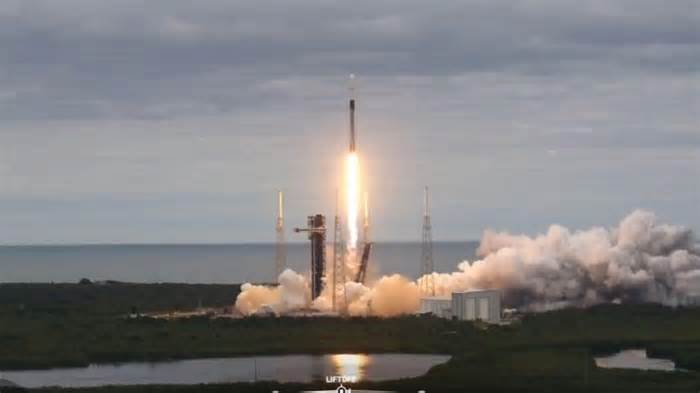
WATCH | Musk's SpaceX Falcon9 launches Isro's GSAT20
- by Firstpost
- Nov 19, 2024
- 0 Comments
- 0 Likes Flag 0 Of 5

Whatsapp Facebook Twitter
SpaceX’s Falcon 9 rocket on Tuesday successfully launched India’s heavy communication satellite Isro’s GSAT-20 (GSAT N-2) from Cape Canaveral in the US. Here’s why India chose Elon Musk’s company this time for the lift-off of its one of heaviest satellites
About India’s communication satellite launched by SpaceX’s Falcon 9
The GSAT N-2 satellite weighs 4,700 kg and is very heavy for India’s own rockets to carry and therefore, Musk’s SpaceX was partnered for the launch.
Isro’s heaviest launch vehicle, the LVM-3 is capable of launching 4,000 kg spacecraft in the Geosynchronous Transfer Orbit.
Designed to enhance India’s communication infrastructure, the GSAT N-2 satellite features a Ka-band high-throughout communications payload with a mission lifespan of 14 years.
It is equipped with 32 user beams, including eight narrow spot beams over the Northeast region and the remaining 24 wide spot beams over the rest of India.
These 32 beams together will be supported by hub stations located within mainland India. The Ka-Band HTS communication payload provides a throughput of approximately 48 Gbps.
Advertisement
According to a report by The Indian Express, the GSAT N-2 satellite also features ka-ka transponders of NewSpace India Limited (NSIL), the commercial arm of Isro.
Once the satellite is operational, the beams with 48 Gbps throughput will provide vital services across India, including internet services in remote areas even in Andaman and Nicobar and Lakshadweep islands. It will also help cater in-flight and Maritime Telecom Connectivity (IFMC) internet service needs of the country.
According to a report by Hindustan Times, the estimated cost for the launch was between $60-70 million.
The many firsts
November 19 was the first time that Isro launched a satellite on a SpaceX rocket through NSIL.
Also, it was also the first time Isro has built a satellite that only uses the advanced Ka band frequency - a range of radio frequencies between 27 and 40 gigahertz (GHz), which enables the satellite to have higher bandwidth.
Advertisement
Please first to comment
Related Post
Stay Connected
Tweets by elonmuskTo get the latest tweets please make sure you are logged in on X on this browser.
Sponsored
Popular Post
Tesla: Buy This Dip, Energy Growth And Margin Recovery Are Vastly Underappreciated
28 ViewsJul 29 ,2024






 Energy
Energy



















